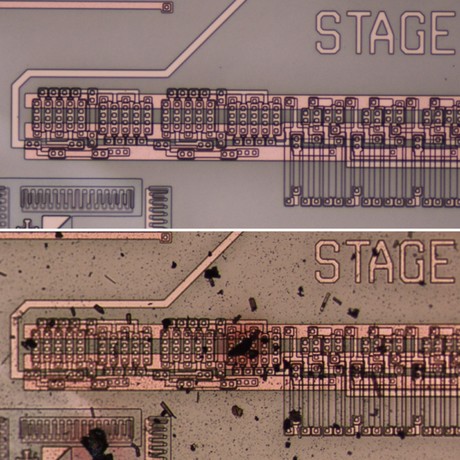Venus-resistant electronics developed by NASA

It’s that time of year again — the day when flowers, chocolates and teddy bears are exchanged between couples around the world, all in the name of love. But for those of you who are less interested in Venus the goddess and more interested in Venus the planetary body, you should find this story most enlightening.
NASA scientists recently demonstrated the first prolonged operation of electronics in the harsh conditions found on Venus, in news which could enable new scientific missions to Earth’s closest neighbour. This would be a tremendous breakthrough, as current Venus landers find it very difficult to cope with the planet’s extreme atmospheric conditions.
The surface temperature on Venus is nearly 460°C, and the planet has a high-pressure carbon dioxide atmosphere. Because commercial electronics don’t work in this environment, the electronics on past Venus landers have been protected by thermal and pressure-resistant vessels. These vessels only last a few hours, and they add substantial mass and expense to a mission.
To overcome these challenges, scientists at NASA’s Glenn Research Center developed and implemented extremely durable silicon carbide semiconductor integrated circuits (ICs), based on circuits originally designed to operate in hot regions of fuel-efficient aircraft engines. The scientists electrically tested two of these ICs in the Glenn Extreme Environments Rig (GEER), which can precisely simulate the conditions expected on Venus’s surface.
The circuits were found to withstand the Venus surface temperature and atmospheric conditions for 521 hours, operating more than 100 times longer than previously demonstrated Venus mission electronics. The results of the study have been published in the journal AIP Advances.
“We demonstrated vastly longer electrical operation with chips directly exposed — no cooling and no protective chip packaging — to a high-fidelity physical and chemical reproduction of Venus’s surface atmosphere,” said Phil Neudeck, lead electronics engineer on the study. “And both integrated circuits still worked after the end of the test.
“With further technology development, such electronics could drastically improve Venus lander designs and mission concepts, enabling the first long-duration missions to the surface of Venus.”
New 300 GHz transmitter enhances 6G and radar technologies
Researchers have developed an innovative 300 GHz-band transmitter for advanced 6G wireless...
3D-printed, air-powered modules help control soft robots
Researchers have developed 3D-printed pneumatic logic modules that make it possible to produce...
Optical device designed to facilitate edge computing
Researchers have developed an optical device that is designed to support physical reservoir...










